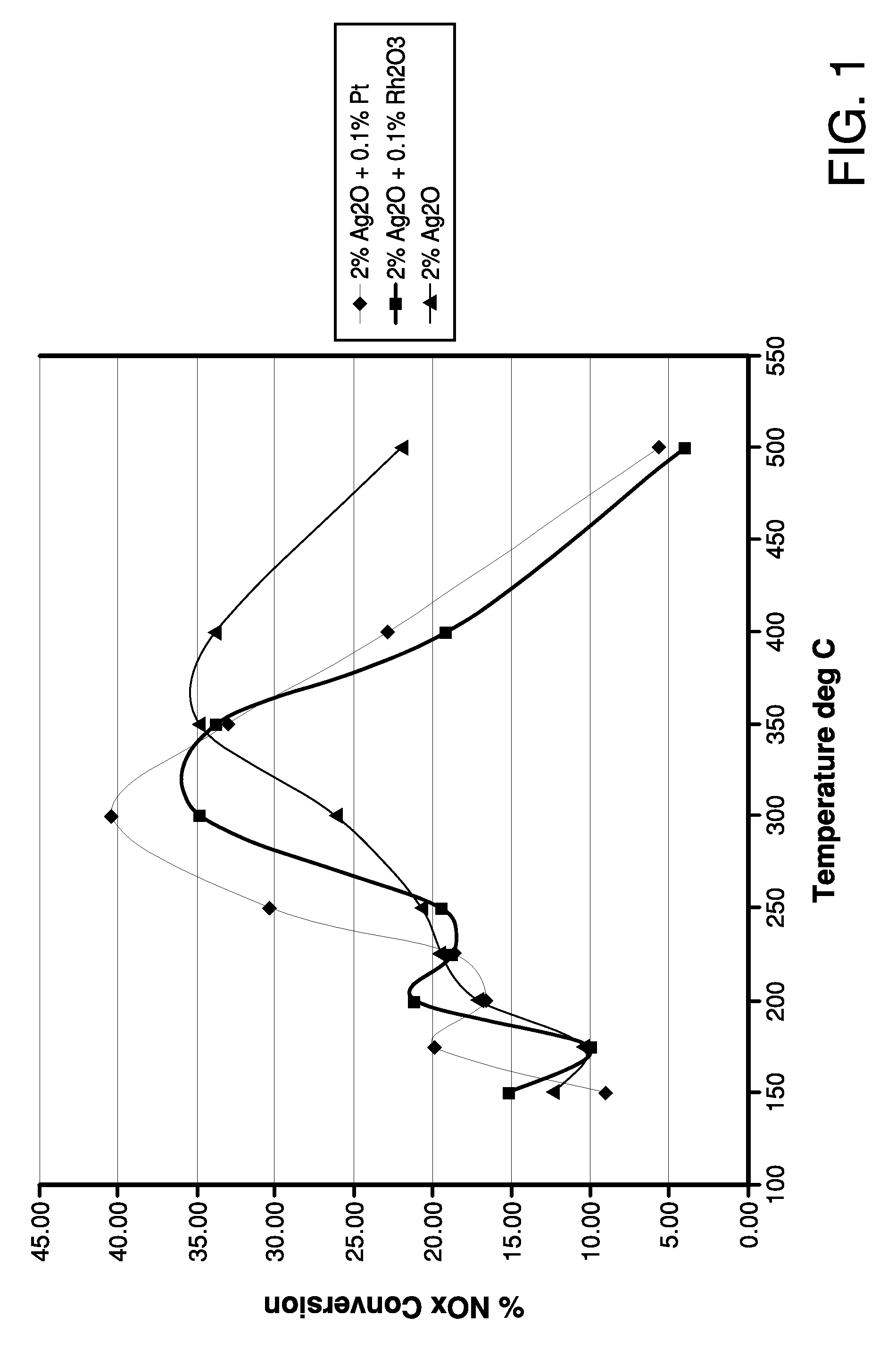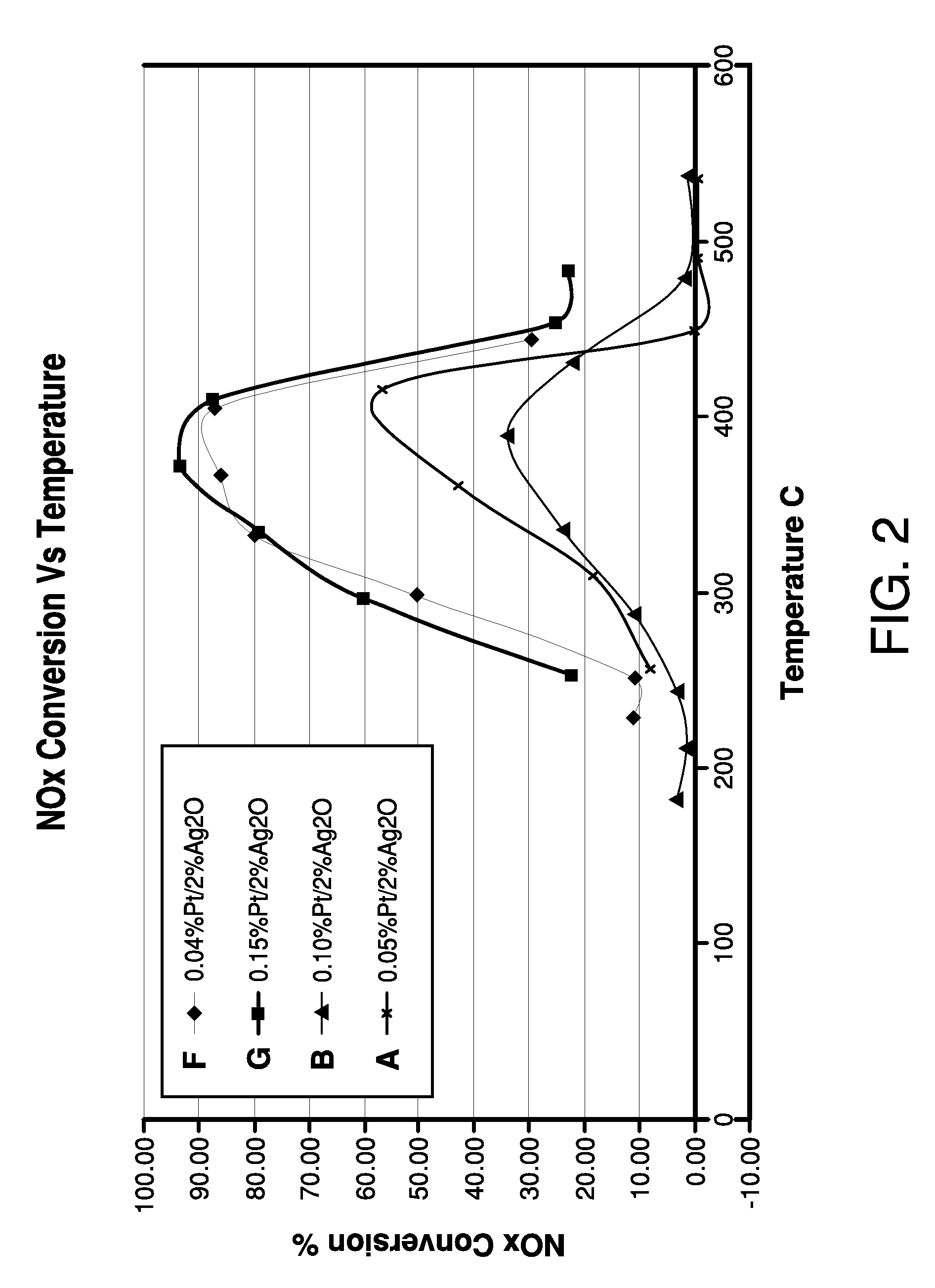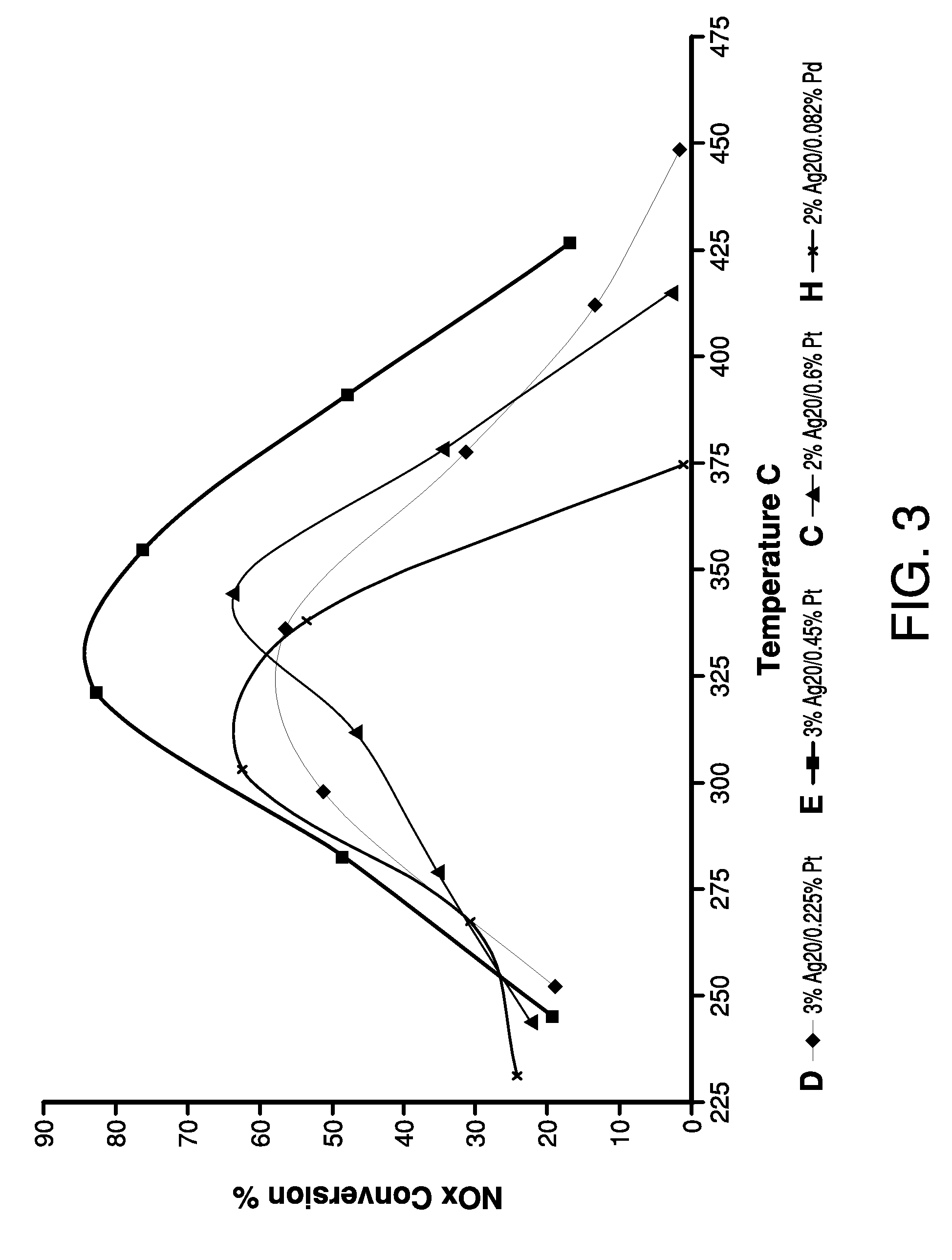Catalysts to reduce NOX in an exhaust gas stream and methods of preparation
- Summary
- Abstract
- Description
- Claims
- Application Information
AI Technical Summary
Benefits of technology
Problems solved by technology
Method used
Image
Examples
example 1
[0071]Three catalysts were prepared by impregnating metals onto a pseudoboehmite support as described above. One catalyst (control) contained 2 wt % Ag2O, the second contained 2 wt % Ag2O and 0.1 wt % Pt (as the metal for purposes of specifying the composition). The third catalyst was 2 wt % Ag2O plus 0.1 wt % Rh2O3 on the same support. All samples were hydrothermally treated at 650° C. for 16 hours. The materials were evaluated in the microchannel reactor using n-octane as the reductant. The results are shown in FIG. 1. Both catalysts containing PM had conversion maxima and operational ranges at lower temperatures than the silver catalyst control.
example 2
[0072]The catalysts in the table below were prepared by the procedures described above and coated onto ¾ inch diameter by 1 inch long cylindrical cordierite monoliths (400 cells per square inch). All coated samples were hydrothermally treated at 650° C. for 16 hours.
atomicatomicSampleWt %WtratiofractionLoading#Ag2O% PtPM / AgPM / (PM + Ag)g / in3MethodA2.000.050.01480.0152.57sequentialB2.000.100.02970.0292.39sequentialC2.000.600.17820.1512.95Co-ImpD3.000.230.04550.0442.64Co-ImpE3.000.450.08910.0822.50Co-ImpF2.000.040.01190.0122.80Co-ImpG2.000.150.04460.0432.45Co-Imp% PdH2.000.080.04360.0422.73Co-Imp
[0073]The performance of these catalysts were evaluated using the laboratory tubular reactor as described above using simulated diesel fuel as the reductant and a space velocity of 12500 hr−1, and a feed concentration of NO of 100 ppm with a ratio of C1:N=8. FIG. 2 shows results for samples (A, B, G and F in Table 1.) A and B were prepared by sequential addition and G and F were co-impregnated....
PUM
| Property | Measurement | Unit |
|---|---|---|
| Temperature | aaaaa | aaaaa |
| Temperature | aaaaa | aaaaa |
| Fraction | aaaaa | aaaaa |
Abstract
Description
Claims
Application Information
 Login to View More
Login to View More - R&D
- Intellectual Property
- Life Sciences
- Materials
- Tech Scout
- Unparalleled Data Quality
- Higher Quality Content
- 60% Fewer Hallucinations
Browse by: Latest US Patents, China's latest patents, Technical Efficacy Thesaurus, Application Domain, Technology Topic, Popular Technical Reports.
© 2025 PatSnap. All rights reserved.Legal|Privacy policy|Modern Slavery Act Transparency Statement|Sitemap|About US| Contact US: help@patsnap.com



